Reel off some of your favourite movies and the likelihood is at least some of the backdrops featured will have been imagined or rather designed. Yes, when it comes to supporting actors the polystyrene filmography rivals that of any Oscar winner.
Indeed, everything from Harry Potter to The Matrix has benefitted from a touch of stage design. Learning as much can ruin the illusion but just as easily enhance your opinion of a film. Production is after all an art form in itself and the absence of it can undermine even the best stories.

A rise in digital technology has somewhat redefined the genre. Nowadays entire cities and in fact planets can be brought to life using the likes of CGI and a green screen. That said, physical film sets still appeal and for as long as that remains the case, polystyrene will do likewise. Nevertheless, in sign block, directors and production designers alike may just have identified a viable alternative.
Polystyrene for Film
Let us first take a look at why polystyrene has endured. One clear attraction is its versatility. Producers rejoice in the fact this material can be utilised for the creation of props, columns and on a bigger scale complete landscapes. This is invaluable given not all movies are afforded the budget of an Avengers or Justice League. Indeed, smaller productions often must bring their imagined worlds to life by means other than CGI.
This is where polystyrene truly comes into its own. With the right tools it can be easily transformed into a chimney, bridge, staircase, headstone, tree log or rock structure. Heck, the original Batmobile was first sculpted this way before being sent to Protocol to custom build.
This substrate is one that can be cut and shaped into any size. Better still, once primed and coated it can resemble practically anything – even Gothic windows.
Having taken the time to create and erect such structures durability becomes all important. Thankfully, polystyrene is nothing if not reliable. Moisture resistant characteristics mean it is long-lasting and able to be placed both inside and out.
Refreshingly however robustness does not come at the expense of manoeuverability. In actuality, polystyrene is lightweight and easy to both transport and setup. The turnaround times associated with these structures is far shorter than those of wood or metal equivalents.
Elsewhere this substrate is an environmentally friendly option that does not emit greenhouse gas. Better still it is recyclable, ensuring even blockbuster movies can do their bit for carbon footprint.
Above all else however polystyrene is cost efficient; gifting filmmakers an inexpensive alternative to aforementioned special effects. Never underestimate the importance budgets, even in Hollywood.
So how - if at all - does sign block differ? Moreover, does it present a better alternative?
Sign Block for Film
More commonly referred to as High Density Urethane Foam – or HDU – sign block is equally lightweight yet solid. Unlike many foams, it contains a consistent structure throughout meaning it can withstand weathering if placed in trying conditions. A movie shot amidst a storm or underwater for instance would not threaten its structure. Reassuringly, no cracks, splits or warping will undermine a great scene.
Sign block is, arguably, even safer to install than polystyrene. Health and safety becomes less of a concern for stagehands as the material is straightforward enough to manoeuvre. Rest assured, the dropping of rubble made from foam does severely less damage.
In a real fillip for production designers meanwhile sign block lends itself to lighting. Indeed, greater impact can be achieved simply through the placement of LED lights within the front or back structure of a feature. Subtle light can ensure a particular item comes into view at a crucial moment, thus making a scene.
When it comes to routing meanwhile, the process is far simpler when deploying sign block. Refreshingly, any shape can be cut and achieved with a much finer level of detail to boot. Moreover, when decorating with sprays and the like, sign block will not melt under solvents like polystyrene, and so does not need to be specially coated.
As for finishing itself, this is made easy by the absence of dust. Indeed, any manner of coats and finishes can be applied as you set about replicating another material entirely. When done right an unsuspecting, gripped audience will never tell the difference.
A relatively new substrate, sign block’s potential remains somewhat untapped. In time however, expect to see it utilised with greater regularity.
Where previously polystyrene seemed the obvious choice for promotional stands (Angry Birds Egg and Nest for Sony’s movie promotion), 3D billboards (as seen at the movie premier of Spider-Man), television props (evidenced on stage at the BAFTA and National Television Awards) and faux scenery (in adverts such as that which saw the National Lottery depict Stone Henge), sign block could have an even greater impact.
Indeed, the future of film could well be one where concept drawings and sketches are brought to life by the likes of carpenters, painters, and scenic artists using not polystyrene but sign block. The chances are, you’ll never know.



